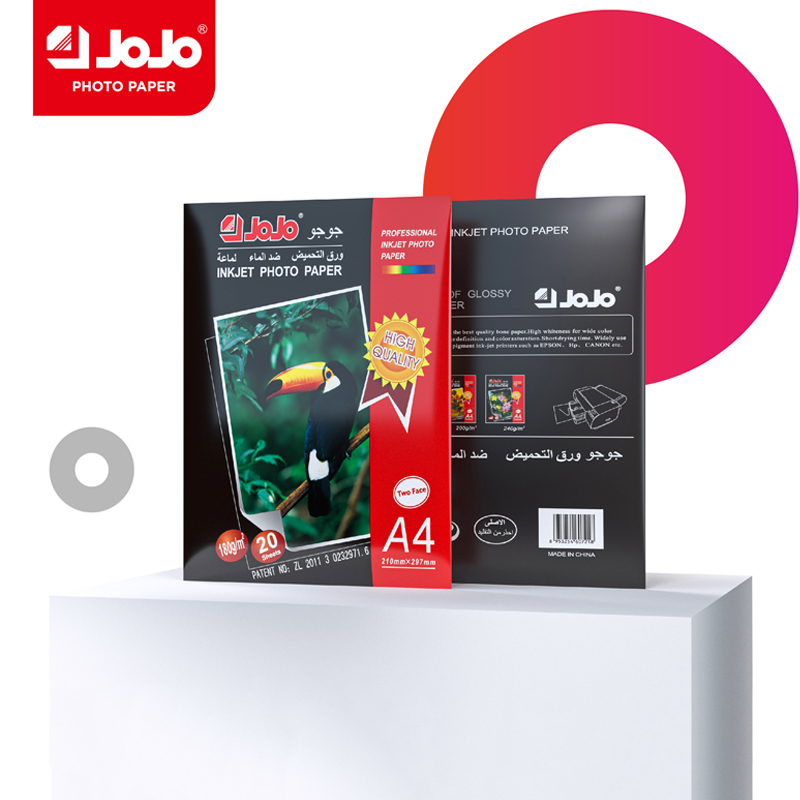If you need any help, please feel free to contact us
Fullcolors vs Regular: What Makes Prints Last Longer?
Choosing the right photo paper plays a central role in how prints look when they come out of the printer—and how they hold up over time. While many users focus on printer settings and ink quality, the surface and construction of the paper itself often determine whether photos retain their sharpness, color, and texture in the months and years ahead.
Fullcolors Photo Paper and Glossy Jojo Paper offer two paths to creating images with consistent quality, each with properties that support everyday projects and more demanding applications. Understanding how these options compare with regular photo paper can help users make decisions that fit their printing goals.

Coating Technologies That Support Longevity
A key reason photos lose vibrancy or fade too soon is that the ink seeps too far into the paper fibers. Standard papers often rely on basic coatings that allow colors to migrate over time or become dull when exposed to light and air.
Fullcolors Photo Paper uses a more advanced surface layer designed to hold ink pigments closer to the top layer of the sheet. This construction not only helps images appear more vivid initially but also supports stability as the print ages. Colors remain more consistent because the coating prevents significant absorption and keeps the pigments from spreading.
Glossy Jojo Paper has a gloss coating that creates a smooth, reflective surface. This gloss layer does more than make photos look polished—it acts as a barrier to protect against moisture and airborne particles. For photos displayed without frames or stored in less controlled conditions, the gloss finish provides an extra layer of defense against environmental changes.
When comparing these materials with uncoated or lightly coated papers, the differences in clarity and durability become clear, especially for prints intended for longer-term use.
Ink Compatibility and Drying Considerations
Ink compatibility affects both print appearance and handling time. Some standard photo papers are developed for a limited range of dye inks and can take longer to dry or be prone to smudging.
Fullcolors Photo Paper is produced to work with common water-based dye inks used in printers by brands such as EPSON, HP, and CANON. Because the coating absorbs ink efficiently and holds it in place, drying times remain short, which helps reduce accidental smears.
Glossy Jojo Paper provides similar advantages with its fast-drying surface, allowing prints to be handled or stacked with less waiting time. This feature is particularly useful in production environments where multiple prints move through the process in quick succession.
When printing on either material, it is important to choose the correct media setting in the printer software. Selecting a preset that matches glossy or heavyweight paper helps ensure that ink coverage is appropriate and drying happens as expected.
Surface Finish and Display Conditions
How a photo looks on display can be influenced by surface texture and how that texture interacts with light. Regular matte papers often scatter light, which reduces reflections but can also soften contrast. In contrast, Glossy Jojo Paper reflects light evenly across the surface, giving images a sharper, more detailed look.
This reflective quality can be an advantage for photos displayed under controlled lighting. However, it also means prints can show fingerprints more easily, so careful handling and protective sleeves are recommended.
Fullcolors Photo Paper comes in gloss and semi-gloss options, supporting a variety of presentation styles. Semi-gloss can be a good middle ground, offering some shine without the full reflection of a high-gloss finish.
For any photo paper, storing prints away from direct sunlight and high humidity helps preserve colors and prevents warping over time.
Weight and Handling Properties
The weight of photo paper contributes to both the feel of the finished product and its resistance to bending or curling. Regular lightweight papers can be prone to deformation, especially in humid conditions.
Fullcolors Photo Paper and Glossy Jojo Paper are available in weights suited for more demanding applications. The thicker construction provides more support for framing, mounting, or frequent handling. For users preparing marketing materials or portfolio pieces, this sturdiness can create a stronger impression.
Proper storage also plays a part in maintaining the paper’s flatness. Keeping sheets in sealed packaging until they are ready to be used can help prevent moisture absorption. Allowing paper to adjust to room temperature before printing further reduces curling and feeding issues.
Practical Measures to Extend Print Life
Even with higher-quality materials, certain precautions can make prints last longer and look better:
Calibration: Regularly calibrate printers and check profiles to match the paper type.
Storage: Use archival-quality sleeves or albums if prints will be kept in storage for extended periods.
Handling: Always handle prints with clean, dry hands or gloves to avoid transferring oils or debris to the surface.
Environment: Avoid displaying prints in areas with high humidity or direct UV exposure.
Simple steps like these, combined with thoughtful selection of paper, can help prints look fresh and vibrant longer, whether for personal projects or professional presentations.

 English
English Español
Español 中文简体
中文简体 Português
Português

